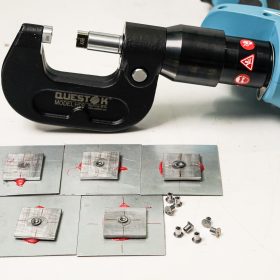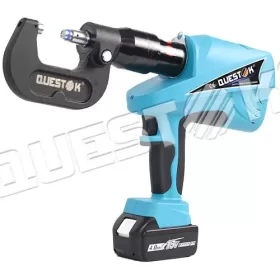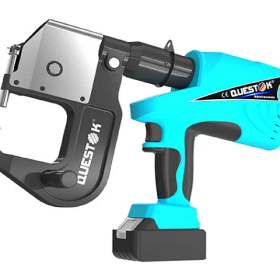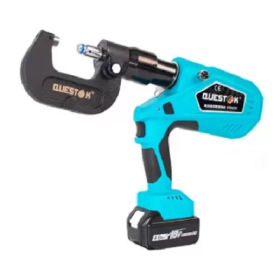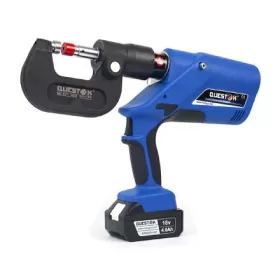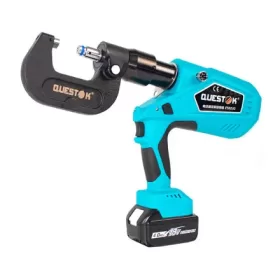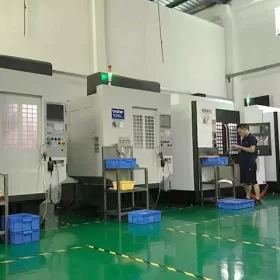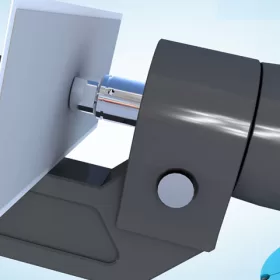Integrating Solid Aluminum Rivet Guns into Your Metal Fabrication Workshop
The incorporation of solid aluminum rivet guns into your metal fabrication workshop can significantly enhance your riveting capabilities. These tools provide exceptional strength, durability, and efficiency, making them ideal for a wide range of metalworking applications. Here’s a comprehensive guide on how to integrate solid aluminum rivet guns into your workshop:
Selecting the Right Rivet Gun
Choosing the appropriate rivet gun for your specific needs is paramount. Consider the following factors:
– Hand-Held vs. Air-Operated: Hand-held rivet guns are portable and offer greater precision, while air-operated guns provide increased power and speed.
– Riveting Capacity: Determine the maximum rivet size and material thickness that the gun can handle.
– Ergonomics and Safety: Ensure the rivet gun is comfortable to use and features safety features such as anti-slip grips and eye protection.
Ensuring Proper Rivet Selection
Selecting the correct rivets is crucial for the success of your riveting operations. Consider these factors:
– Material: Aluminum rivets are typically used to join aluminum workpieces.
– Head Style: The head style of the rivet influences the appearance and functionality of the joint. Common head styles include flat, countersunk, and dome.
– Diameter: Choose the rivet diameter based on the thickness and strength requirements of the joint.
Preparing the Workpiece
Prior to riveting, it’s essential to prepare the workpiece to ensure a strong and durable bond:
– Cleaning the Surface: Remove any dirt, oil, or oxidation from the surfaces to be joined using a solvent or degreaser.
– Drilling Holes: Drill holes that are slightly larger than the rivet diameter to allow for proper expansion during riveting.
– Edge Distance: Maintain an appropriate distance from the edge of the workpiece to prevent rivet pull-out.
Operating the Rivet Gun
Once the workpiece is prepared, follow these steps to operate the rivet gun:
– Insert the Rivet: Place the rivet into the appropriate nozzle based on its diameter.
– Position the Rivet Gun: Align the rivet gun over the prepared hole.
– Pulling the Trigger: Pull the trigger to engage the riveting process. The rivet will be deformed and set in place.
– Inspecting the Joint: Inspect the riveted joint to ensure it is secure and meets the desired strength and appearance.
Maintenance and Troubleshooting
Proper maintenance and troubleshooting are crucial for optimal rivet gun performance:
– Lubrication: Regularly lubricate the moving parts of the rivet gun to prevent wear and tear.
– Cleaning: Clean the rivet gun and nozzles after use to remove any debris or residue.
– Jamming: If the rivet gun jams, remove the stuck rivet and inspect the tool for any damage or obstructions.
– Air Leaks: Check for any air leaks in the air-operated rivet guns to ensure proper operation.
- Company News
- Industry News
- Tag
- Tags
-
The Advantages of Questok Rivet Guns: Precision, Efficiency, and Durability
In industrial fastening applications, the choice of tools directly impacts productivity, safety, and long-term cost-effectiveness. Questok rivet guns have emerged as a standout solution for professionals across aerospace, automotive, and construction sectors. Combining advanced engineering with user-centric design, these tools deliver unmatched performance. Below are the key advantages that make Questok rivet guns a preferred choice:
-
Rivet Gun FAQ
Rivet Gun FAQ-SPR
-
Fast Assembly and Repair With Cordless Solid Rivet Gun
Questok cordless solid rivet gun stands out as a pivotal innovation, merging portability with power to facilitate efficient and effective fastening in a myriad of applications.
-
Redifine The Role of Self-piercing Riveting Gun Machine
Self-piercing riveting adopts high-speed mechanical fastening skill that joins thin sheet materials, typically steel and aluminum alloys.
-
The Latest Innovations in Clinching Tool Design
Explore the latest innovations in clinching tool design, redefining precision, efficiency, and versatility in material joining.
-
The Application and Maintenance of Self-Piercing Rivet Guns
Delve into the applications of self-piercing rivet guns in the automotive and aerospace industries and reveal the essential maintenance practices that ensure their accuracy and efficiency.
-
Rivetless Riveting Gun for Ventilation Duct Projects
The ventilation duct rivetless gun is a tool for riveting ventilation ducts without rivets.
-
Guide to Using Self-Piercing SPR Riveting Gun
In the automotive industry, self-piercing SPR (Self-Piercing Rivet) riveting guns are commonly used for joining metal components in vehicle bodies, including BMW vehicles.
-
Rivet Gun FAQ
Rivet Gun FAQ-SPR
-
Versatile Fastening- Applications of the Handheld Rivet Gun Across Industries
In the realm of fastening, the handheld rivet gun stands as a testament to ingenuity and versatility. Its ability to effortlessly join materials with sheer strength and permanence has revolutionized manufacturing and construction processes, leaving an enduring mark on diverse industries. Aerospace: Where precision and reliability are paramount, the rivet gun shines. In aircraft assembly, […]
-
Time-Saving Tools- Speeding Up Projects with Electric Blind Rivet Guns
In the whirlwind of project deadlines, every minute counts. But what if there was a tool that could dramatically reduce assembly time, giving you an edge in the race against the clock? Enter the electric blind rivet gun: your secret weapon for lightning-fast and effortless riveting. Electric blind rivet guns are the ultimate time-savers for […]
-
Streamlining Fastening- How an Electric Blind Rivet Gun Enhances Efficiency
Introduction In the realm of manufacturing and assembly, fastening plays a crucial role in securing components and ensuring structural integrity. Traditional manual rivet guns, while reliable, are often time-consuming and labor-intensive. The advent of electric blind rivet guns has revolutionized the fastening process, significantly enhancing efficiency and productivity. This article delves into the benefits of […]
-
The Role of Automation in Electric Rivetless Clinching
Electric rivetless clinching (ERC) is a lightweight joining process that eliminates the need for rivets or other fasteners. This can lead to significant cost savings and increased production efficiency. Automation plays a critical role in ERC, enabling high-speed and high-volume production. Automated Feed Systems Automated feed systems are used to accurately position the two workpieces […]
-
Why Choose a Universal Self-Piercing Riveting Gun for Your Projects?
In the realm of construction and fabrication, riveting guns stand as indispensable tools for creating secure and robust connections. Among the various types available, universal self-piercing riveting (SPR) guns have emerged as a game-changer due to their versatility and efficiency. This article will delve into the compelling reasons why choosing a universal self-piercing riveting gun […]
-
Why Choose Stainless Steel Hollow Rivets for Your Projects?
In the world of industrial manufacturing, choosing the right fasteners for your projects is crucial for ensuring longevity and reliability. Among the many options available, stainless steel hollow rivets stand out as a superior choice for a wide range of applications. This article delves into the compelling reasons why stainless steel hollow rivets are the […]
-
Top Trends in Electric Rivetless Clinching Guns
In the realm of fastening technology, electric rivetless clinching guns have emerged as a revolutionary solution for a wide range of industrial applications. These advanced tools offer several преимущества and capabilities, revolutionizing the way businesses approach their fastening needs. Adoption of Brushless Motors Brushless motors have gained significant traction in electric rivetless clinching guns due […]
